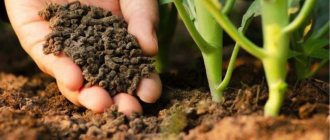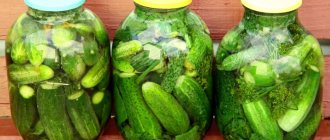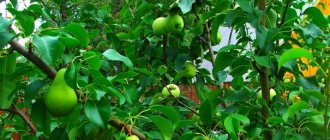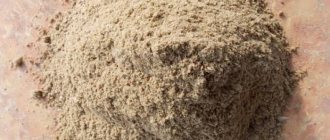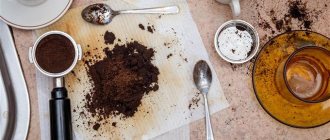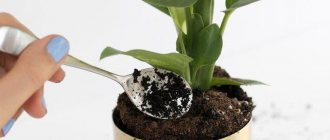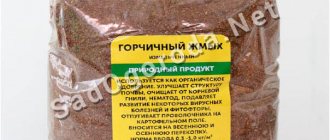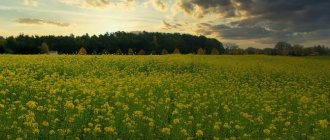Raising pigeons is both a hobby and a profitable business, but its by-product is droppings, which are a foul-smelling, aggressive substance that kills plants and can also damage car paint.
However, this droppings can become a good fertilizer and bring a lot of benefits to the garden if it is properly prepared and applied.
The chemical composition of fertilizer and its role in plant care
The set of nutrients in pigeon droppings is the same as in other poultry waste, which includes compounds of nitrogen, phosphorus, potassium, calcium and trace elements. But, compared to other birds, for example, chickens, pigeon droppings contain 4 times more nitrogen and 8 times more phosphorus.
As a percentage:
| Nitrogen, N | Phosphorus, Р2О5 | Potassium, K2O | Calcium , CaO | Organic matter | Water |
| 6,5 | 6,0 | 0,8 | 2,4 | 27,7 | 56,6 |
In terms of nutrients, pigeon waste exceeds animal manure.
In terms of their rapid effect on the soil, they can be compared with mineral fertilizers. But, when fresh, it is a caustic substance that is dangerous to plants. Even the ancient Khazars considered it poisonous. In modern regions where bird droppings are spread uncontrollably in large volumes, the phenomenon is equated to environmental damage.
In order not to cause harm to your garden, fertilizers must be applied correctly and at the right time.
Pigeon is a carrier of dangerous diseases
It’s not for nothing that the pigeon is called the “flying rat.” This bird can be a potential carrier of up to 90 diseases. Moreover, 10 of them are pathogenic for humans. Salmonellosis, histoplasmosis and psittacosis are especially dangerous. For example, ornithosis is a severe infectious disease that affects the lungs, which can lead to the most disastrous consequences. People contract the infection through contact with birds or inhalation of air containing particles of contaminated pigeon droppings.
The pigeon is also a carrier of numerous parasites, mainly ticks. Ticks parasitize human skin, causing itching, rashes and hemorrhages, which can lead to serious complications.
But most of all, pigeons are dangerous to their feathered counterparts. They infect farm birds with dangerous diseases, causing enormous damage to agricultural holdings. Ornamental birds living in people's apartments are not immune from troubles.
Subtleties of use on a personal plot
In caring for garden and vegetable crops, the same scheme is used as for chicken manure (find out → the use of chicken manure as fertilizing + reviews). Fertilizer is applied:
- Into the soil in dry form,
- Like an aged infusion,
- In compost for nutrient enrichment ⊕ how to make a compost pile using pigeon droppings.
Read more about each method.
How to properly fertilize the soil with dry pigeon droppings
An effective way to neutralize aggressive substances is drying.
Fresh waste products of birds are a liquid substance. It is virtually impossible to collect it in large quantities at one time. Therefore, it is accumulated. If you put it in an open container, rapid evaporation of moisture and oxidation of the substance occurs. The droppings contain a large amount of ammonia compounds, which quickly combine with the air. At the same time, the fertilizer loses toxicity and becomes safe for plants.
It is better to do this in the open sun. This preparation brings two benefits:
- Firstly, aggressive nitrogen is neutralized;
- Secondly, dangerous pathogens die in the sun, in particular helminth larvae, which are harmful to humans. They can be transmitted when working with fertilizers.
Important! When working with pigeon droppings, be sure to use personal protective equipment.
After drying, the fertilizer is applied to the soil. Even after entering the soil, droppings quickly lose nitrogen. In this regard, it is not recommended to bring it in for autumn digging. During the winter, the useful element dissolves and goes into the lower layers after the snow melts. It is better to use fertilizer in the spring shortly before planting garden crops.
When and how to fertilize with pigeon droppings (click to expand)
The work is carried out according to agricultural technology:
- Preparation begins when the average daily air temperature reaches +12 – + 15 degrees, and the soil warms up to +100.
- As part of traditional farming, the soil is dug up to a depth of 20–25 cm (at the tip of a shovel).
- Dry litter is evenly scattered over the entire area and leveled with a rake.
- Planting a vegetable garden is carried out no earlier than 2 weeks after preparation, but no later than a month.
Proponents of the organic method of gardening are of the opinion that digging is harmful to the soil. This kills the beneficial microflora that forms humus. Therefore, before applying fertilizer, the soil is not turned over, but loosened to a depth of 10 cm, using a Fokin flat cutter. After this, bird droppings are added in the same way as with the traditional method.
Kinds
This material is divided both according to the degree of purity and the state of the organic substances it contains.
According to the degree of purity it can be:
- bedding;
- without bedding.
Litter is a litter that contains litter, that is, chopped vegetation of any kind. Under natural conditions, as well as when bred in captivity, the litter absorbs excess liquid, thereby reducing the likelihood of developing various intestinal infections caused by pathogenic microorganisms.
In addition, the litter weakens the odor, because it arises due to the evaporation of moisture, which carries with it skatole, which is the cause of the unpleasant odor.
Litter-free droppings are collected only in some types of captive breeding, when the birds are constantly inside the cage, and the excrement falls through the lattice cells onto a litter collection located under the cages. Due to the content of poultry and vegetation that are crushed but not fermented in the gastrointestinal tract, it contains more microelements, and the fertilizer obtained from it is more balanced.
Based on the state of organic matter, litter is divided into:
- fresh;
- stale;
- partially rotted;
- completely rotten;
- dry.
Excrement that was collected no more than a week ago .
Their main difference is the maximum content of nitrogen, which has not yet had time to evaporate (ammonia) or become food for bacteria (other nitrogenous compounds).
If more than a week has passed, then the litter is classified as stale, which contains slightly less:
- nitrogen;
- humidity;
- smell.
Partially rotted excrement is considered to be excrement that has already lost its odor, as well as almost all ammonia nitrogen, but it still contains toxic substances that pose a threat to plants .
Humus is the most effective state of pigeon droppings in which it can be used to fertilize any plants. It has a loose structure and smells of earth, and all the toxic substances have been processed by bacteria, turning them into humic acids, which are also called humus.
Dried pigeon droppings contain almost no ammonia nitrogen , and the bacteria are either dead or dormant, so the organic matter content does not change when properly stored.
Preparation and use of infusion
The infusion is kept in an open container to evaporate ammonia compounds.
Sequence of work:
- Fresh chicken droppings are placed in a metal or plastic container.
- Fill with water in a ratio of 1:15, that is, 1 part fertilizer and 15 parts water.
- Place in the open sun and keep, uncovered, for at least 15 days.
- The infusion is thoroughly mixed daily.
- When the product reaches the standard, it is filtered before use.
- To feed garden crops, apply after watering at the rate of 0.5 - 1 liter per plant, depending on its size.
Also, an infusion can be prepared from dry matter. Then the proportion will be 1:4. After two weeks, the slurry is diluted 1:50 and the garden is watered. In this case, there is no need to strain.
How to properly apply fertilizer for the garden
Due to its aggressiveness, bird droppings should be used with extreme caution. It is important to correctly collect and prepare the material for use.
In most cases, farmers use manure in the form of humus, dry extract or nutrient liquid. Such fertilizers, as a rule, do not contain parasite eggs and infections that can harm plants and sometimes humans. Litter that has not been processed rapidly loses its beneficial qualities and contains a large amount of substances that are aggressive to garden crops.
Digging with dry fertilizer in the fall
After harvesting, it is recommended to feed the soil with dry manure, crushed to a powdery state. Applying fertilizer during the autumn digging of the soil will prepare it for the next season.
It is enough to scatter dry droppings in a ratio of 500-600 g per 1 square meter. m of land and dig up the soil, going 10-15 cm deep.
Mulching the soil
Mulching is a popular agrotechnical procedure that involves placing the so-called covering material on the soil, which is the droppings. Any type of excrement can be used for mulch, with the exception of fresh excrement, which is only suitable for mulching areas that are fallow.
You may be interested in: How and with what to cover strawberries in the garden to prepare them for the winter of 2021. How and when to cover roses for the winter - preparation features and detailed instructions. How and with what to cover grapes for the winter in different regions of Russia
But humus mulch can be applied either directly under the plants or throughout the entire area at any time of the year. The gap between the lower leaves of the plant and the mulch should be at least 3 cm.
Placement in holes for seedlings in spring
To put into the holes, you can use droppings of any consistency and degree of freshness. However, the more aggressive substances are preserved in the fertilizer, the greater the layer of soil it must be separated from the young roots of the seedlings. The only exception is humus, which can be placed directly into the holes in its pure form or as a soil mixture with the addition of garden soil and sand.
When using stale fertilizer, the thickness of the separating layer of soil should be 5 cm. If the droppings are dry or fresh, then it is better to adhere to an indentation of 10 and 15 cm, respectively.
How to dilute droppings and water plants
A nutrient solution based on manure is a more effective fertilizer than dry extract or humus.
You can prepare a liquid nutrient medium from fresh or old droppings by dissolving it in water in a ratio of 1 to 10. The resulting mixture, after the excrement has become limp, must be thoroughly mixed and left in the sun, having previously been treated with superphosphates or bacterial preparations. As soon as the surface of the solution stops bubbling, it can be used for its intended purpose. This usually takes 2-3 weeks, depending on the amount of mixture. The solution must be applied at the root of the plants, and only after rain or watering.
Pigeon droppings in compost. How to prepare and when to use
Some gardeners rightly believe that one of the best uses of pigeon droppings is adding them to compost. Before forming a useful fertilizer, it is worth considering the following recommendations:
- Plant residues are added to the compost mixture - mown grass, straw, chopped bark, wood chips, dry leaves.
- Also, food waste is placed, with the exception of meat and dairy products.
Plants that show signs of disease or pest damage should not be composted.
Also, do not put waste products of dogs and cats; they may contain infections dangerous to humans, for example, helminth larvae or pathogens of toxoplasmosis.
When harmful components are eliminated, you can begin to form compost.
- The main plant materials are crushed before laying and placed in a compost container in layers of 10-15 cm
- Each level is sprinkled with pigeon droppings and soil (or peat) about 5 cm.
- Then, water it with EM - preparations for improving overheating.
- After this, the procedure is repeated layer by layer until the container is filled to the brim.
- Cover with a lid to prevent rain from washing away the nutrients.
- Keep for at least a month.
- Water 1-2 times a week.
Sometimes it is advised to mix raw materials, they say, this way it ripens faster. It is better not to do this, since in compost beneficial microorganisms are located at a certain depth. If you constantly move them, the gumming process slows down and its maturation time increases. Find out → how to use compost as fertilizer + reviews.
Tip #1 . In small areas where there is no room for full-scale containers, compost with pigeon droppings can be formed in bags. Sugar containers and agrofibre bags are suitable for this. This material allows air and moisture, which is necessary for the formation of fertilizer, to pass through well. You can use plastic bags, but then you need to make holes in them for ventilation.
Containers are filled according to the same principle as stationary boxes. Then they are placed in any suitable place in the garden where there is shade and protection from rain.
Complete decomposition of the compost takes place in 5–6 months naturally, and within
1.5 – 2 months with the use of EM-preparations (effective microorganisms). Additionally introduced microflora speeds up the process by at least 2 times. The product is added every 2 weeks after watering the contents of the container or bag.
Ready-made fertilizers are applied to the soil at the end of August, beginning of September, when all the fruits in the garden have been harvested. Application rate – 3 – 4 kg per square meter.
Method of application:
- The top layer of soil is slightly loosened.
- Distribute the compost evenly over the surface and level it with a rake.
- Then water generously to a depth of 10–15 cm. You will need 10–15 liters of water per square meter. In dry soil, compost with pigeon droppings will work slowly.
If fertilizing is not carried out in the fall, fertilizer can be applied in the spring. The work is carried out according to the same scheme as in the fall, but no later than two weeks before the start of gardening work, and preferably a month. The difference is that in the spring, watering is not required because the soil is already moist after the snow has thawed.
Drying guano for subsequent processing
Typically, pigeon breeders keep birds of ornamental and meat breeds in enclosures, giving them the opportunity to defecate directly on the floor. They are forced to clean the enclosures daily, removing the floors of the cages.
The collected droppings are removed from the dovecote and scattered in an even layer in a well-ventilated area or under a special canopy. Due to their small size, bird excrement dries within a few days, after which it can be placed in absorbent bags or other moisture-proof containers.
Remember that the fumes from pigeon droppings are saturated with thallium, a high concentration of which in the air can lead to loss of health and even death.
In industrial conditions, special vacuum installations are used. They dehydrate the droppings and destroy possible parasites. Then the resulting material is packaged in plastic bags and supplied to the retail chain.
Such an environmentally friendly product can be used as an independent fertilizer, or concentrated mixtures for feeding plants can be made from it.
Tips for feeding different crops with pigeon droppings
Useful fertilizer can be safely used for all types of garden and ornamental plants. Environmentally friendly fertilizer is well suited for any crops if the dosage and timing of application are followed correctly.
Cucumbers and other melons
When caring for growing crops of cucumbers, zucchini, squash, pumpkin and melon, use an infusion of pigeon droppings 1:10.
The first fertilizing is carried out after the seedlings (or seedlings) have completely established themselves, but always before flowering begins. The criterion by which the fertilizing period is determined is 2–3 pairs of young leaves.
When working, it is important to follow this rule:
- The infusion should not be poured directly onto the stems of plants, otherwise the fragile crop may get burned.
- Fertilizers are applied between rows after abundant watering. You need to make sure that the pigeon droppings solution does not get on the leaves. If this happens, it should be washed off immediately with plenty of water.
When else to fertilize cucumbers with pigeon droppings (click to expand)
The next session is carried out after flowering until greenery appears. It can be canceled if the culture develops normally. The recommendation applies to all melons.
Tomatoes and other nightshades
When planting seedlings, use compost with pigeon droppings at the rate of 1 cup per planting hole. The fertilizer is thoroughly mixed with the soil and only after that the seedlings are placed in the hole.
If young plants take root slowly or have been exposed to unfavorable weather conditions, another feeding can be done.
For intensive growth of stems and leaves, an infusion of pigeon droppings is used. For feeding tomatoes, potatoes, eggplants, peppers, the application rate is 0.5 liters per plant.
The time for feeding potatoes occurs when the stems reach 8–10 cm in height.
Cabbage
To plant cabbage in open ground, it is recommended to add the following nutrient mixture to each square meter:
- Rotted manure – 5-6 kg.
- Dry pigeon droppings - 300 g, or the compost in which it is contained - 0.5 kg.
The fertilizer is uniformly mixed with the soil to a depth of 10-15 cm. Planting is carried out after 12 - 15 days.
Cabbage is responsive to the application of pigeon droppings, since it includes a large amount of nitrogen necessary for the growth of the leaf mass of the crop. Beets, carrots
Thinning carrots and beets can be avoided if sowing is done using a cardboard egg mold. Marking will allow you to place the seeds at a sufficient distance. Then the consumption of pigeon feeding will be less.
Crops actively begin to grow after fertilizing, which is carried out after thinning the seedlings.
For the formation of root crops, a lot of phosphorus is needed, of which there is much more in pigeon droppings than in other bird waste.
The seedlings are fed by applying fertilizers between the rows at the rate of 2 liters of infusion per 1 m/p.
Since root vegetables need potassium, and there is relatively little of it in pigeon droppings, beets and carrots need to be fertilized additionally, especially during the ripening period.
(!) Serious mistakes gardeners make in using pigeon droppings
- Prepare too concentrated an infusion and do not keep it for the prescribed time.
Improper preparation does not make the litter less aggressive. Applying such a product may burn the plants.
ALL errors in using pigeon droppings (click to expand)
- Use pigeon infusion in the second half of summer for tomatoes.
A large amount of nitrogen contained in fertilizing provokes the growth of green mass to the detriment of fruit ripening. Starting in July, this feeding is canceled.
Reviews
Real reviews from those who use pigeon droppings as garden fertilizer should be sought on various forums where users share their experiences with this material.
In addition, gardeners often compare this material with animal or other bird manure, so you will see all the advantages and disadvantages of this material.
We have prepared links to topics in various forums where such uses of pigeon excrement are discussed:
- RMNT.
- Poultry farmers forum.
- Violet grower.
